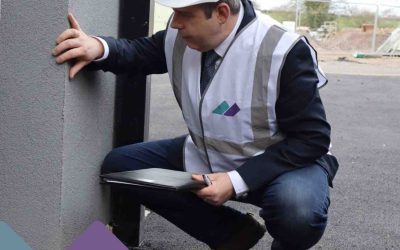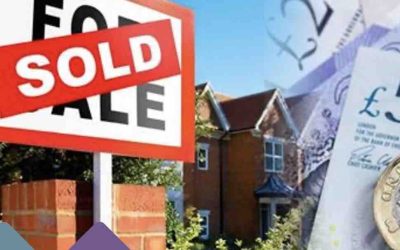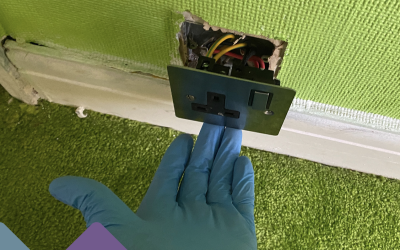Thank you for clicking on today’s Property Surveying blog post topic. Through our weekly blog posts, we aim to discuss some of the more complex and complicated areas of surveying and valuation that our RICS surveyors and valuers deal with on a daily basis.
There is no surveying services that we undertake that is anymore complex than property valuation.
Property valuation is a complicated and difficult area of the surveying profession, and in many cases the valuer undertaking the instruction and valuing the asset, will need to not only think outside the box, but also look far and wide for reliable and trusted sources of data in order to best complete the instruction and task at hand.
The most widely used and recommended form of valuing any property, or anything for that matter, is the comparative approach.
The comparative approach to property valuation is built off the foundation that the property valuer finds similar properties, in terms of size, characteristics and location. With the property valuer then applying these in a considered approach to the property asset that is being valued and is subject to the valuation at hand.
The very premise of this approach is key to the property valuer locating good information therefore it is imperative that the surveyor applies firm and established research in order to achieve and accommodate this.
With various different digital resources now available and online such as:
- Right Move
- Land Registry property price data indices
- Zoopla
- Prime Location
All of these information sources are going to go a significant way to helping the property valuer establish a sound and considered valuation and in due course reference the comparative sales information that he or she has located.
However, that being said there are always going to be difficulties in undertaking valuations, especially if situations of improvement, development or upgrade have taken place to the property.
The very premise behind this is that as soon as this occurs, and it commonly does, the valuer is going to have to apply their expertise and knowledge to ensure that the comparative property is adjusted to take account of these additions and upgrades. Bearing in mind, that these additions and upgrades are going to increase the value of the comparative property, which may not bode well or take into account the subject property being valued.
In order to best achieve a firm and comparative property valuation, the valuer will then need to apply their knowledge and understanding to the comparative property, often creating a per square foot (psf) or per square metre (psm) figure and then applying this to the subject property to be valued.
In undertaking this considered and scientific approach, the valuer is going to be able to ensure that the size of the comparative property applies directly to the subject property that is being valued.
Furthermore, as property sales are a stamp in time, often reflective of the current market rates at the time of sale, this poses a risk and consideration that the property valuer will need to overcome and take into account when valuing the subject property.
It is therefore imperative that the valuer look at what the market and property prices have done from the date of sale to the date of the valuation for the comparative property.
It is not uncommon for property prices and market trends to move both upwards and downwards. Peak and dip. This is the very nature of the property market as a whole as it is influenced by external factors such as interest rates, availability of mortgages and wider economic considerations.
In order to ensure that the property valuation takes into account these considerations, the valuer will also likely apply a percentage gain from trusted indices such as the nationwide house price index (HPI indices), Her Majesty’s Land Registry Property Indices, or a variety of other types.
Once the valuer has taken these into account, they will then increase the value of the property, or comparatively decrease the value of the property, based on the sale price, outcome of what the market says the property price would have done over the period of time from the subject property’s valuation to the comparative property’s sale. Finally arriving at a firm and considered property valuation.
The final consideration that a good property valuer will undertake and consider is the works that have taken place to the subject property and comparative property.
For example, if the subject property that is being value is in excellent condition with new bathrooms, new kitchen having been refurbished throughout.
However, the comparative property was in a poor state of repair then the valuer is going to have to take into account this change in condition, and ensure that the overall value they apply to it is reflective of the facts.
This very much comes down to a property valuer’s knowledge of property, construction and the overall costs in that regard.
Our take on it here at Stokemont, is that a good property valuer, is a good building surveyor first and foremost.
You will often hear me saying that valuation is an art and not a science, here at Stokemont we couldn’t agree with this more. In order to best arrive at a valuation and one that is reflective of the market considerations, size of the property and condition, the property valuer should take a considered and reasoned approach, applying their skill, knowledge and expertise to arrive at a final outcome.
This is very much scientific, however there is also an art in getting to a final figure in that regard. Property valuation is something that we are very proud to do on a daily basis here at Stokemont.
If you would like to discuss your property surveying and property valuation requirements with our team of RICS valuers and building surveyors, please feel free to give us a call today and we would be more than happy to assist and advise you. You can also take a look at our projects page where you can see some of the valuations we have been involved in. Notably last year we were very proud to value over £150,000,000 of property throughout England and Wales.
This is a significant number and in particular there were some very high value properties that formed part of our notable projects.
Equally, if you would like to discuss any valuation enquiries with us, or speak with a valuer as to how best to approach the property that is being valued to ensure a reasoned outcome, please feel free to call us today, and our valuers would be more than happy to discuss and advise this with you.




